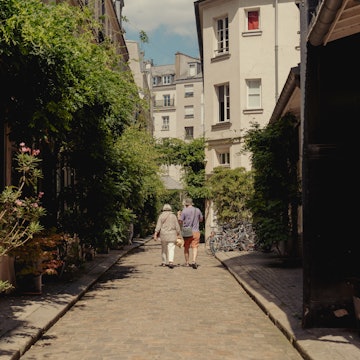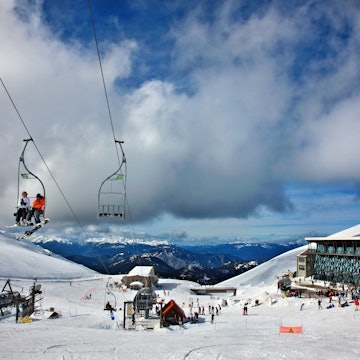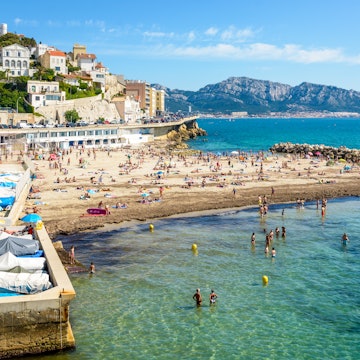
The 14 best things to do in Provence and the Côte d’Azur

Jun 4, 2025 • 13 min read

For fine wine, lavender fields and coastal coves, here are some of the best things to do in Provence. Alexandre.ROSA/Shutterstock
There’s the Provence and the Côte d’Azur of magazine covers and social media posts: vast plains ablaze with lavender, striped beach umbrellas against the dazzling blue of the Mediterranean. Then there’s the Provence and the Côte d’Azur you might not have discovered just yet: little-known ski resorts and Alpine villages with rich pastoral traditions.
Whether you’re getting lost in nature, dipping in the Mediterranean or absorbing the bustle of its most cosmopolitan city, Provence is a region you’ll fall in love with and want to return to again and again. Here are the best things to do on your first visit to this broad and beguiling pocket of France.
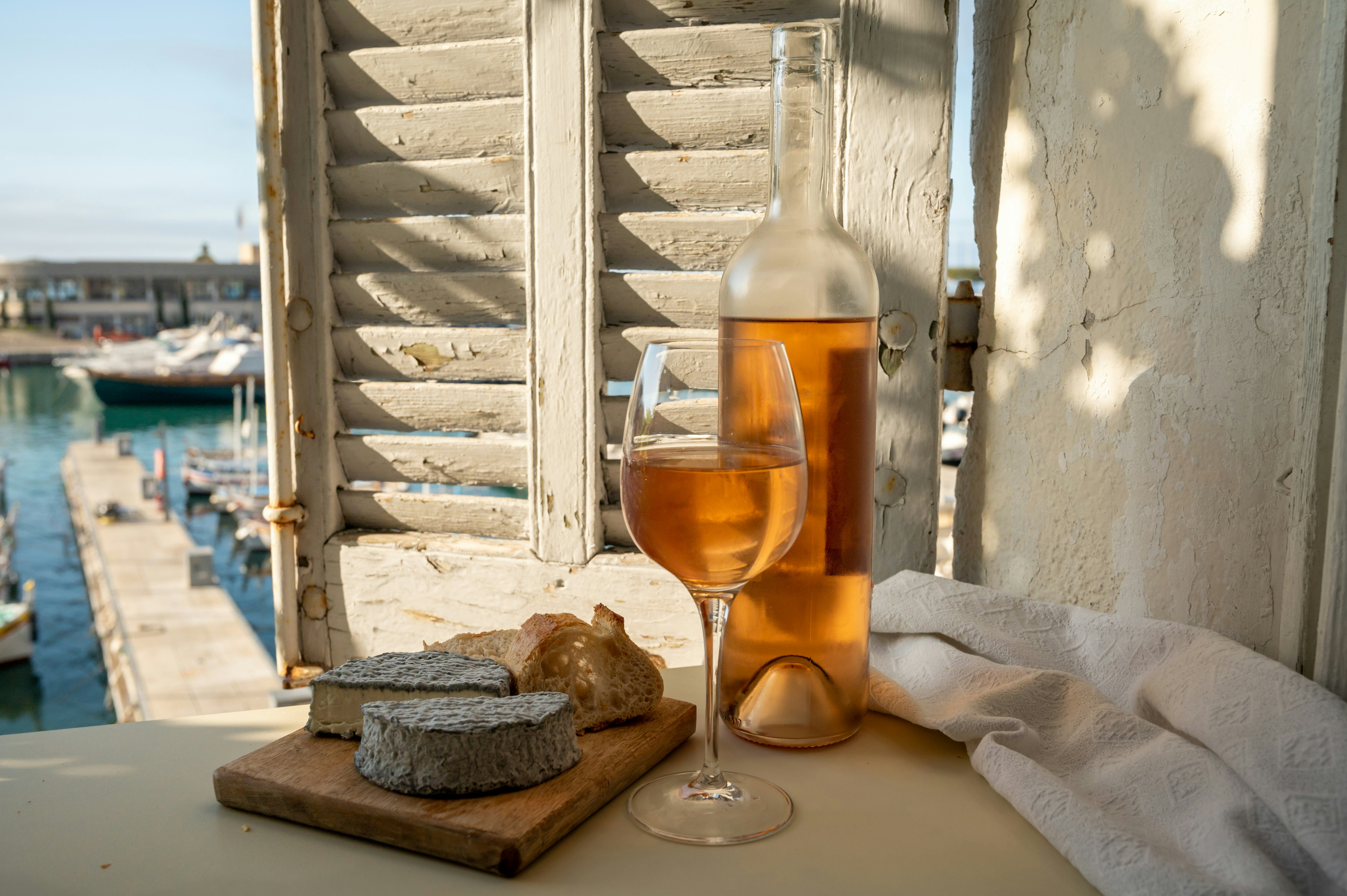
1. Sip delicate rosés and rich reds
When the ancient Greeks planted France's first wine grapes in the soils around newly founded Massalia (Marseille), the seeds of Provence’s prized wine tradition were sown. Today, over 80% of all wine made here is rosé, and the pink flows year-round on sunlit cafe terraces. There’s so much more to the region’s winemaking than one color, however; it extends from the deep reds of the Vaucluse to boutique “Made in Nice” whites.
To go to the heart of Provence’s famous rosé, head to Maison des Vins de Côtes de Provence in Les-Arcs-sur-Argens. You can sip the elixirs of medieval popes of Châteauneuf-du-Pape near Avignon and take a new favorite home (these complex reds only improve with age), or meet a small monastic community with a surprising viticultural tradition on the Île St-Honorat off the coast of Cannes. Finally, for a wine tasting with a view, enjoy the panoramas from Domaine des Masques, just outside Aix-en-Provence.
Planning tip: If you find yourself short on time but want to get a feel for the region's wines, visit the local wine co-operative.

2. Go boating on the Med
The calm Mediterranean Sea is as pretty as a picture – but don’t just admire the view. You can tailor the day’s activities to match your mood: relaxed afternoons on a skippered sailboat, easy swims with a snorkel and mask off undeveloped islands, or deeper dives down to moody shipwrecks.
Set sail in search of dolphins on a boat tour from St-Jean-Cap-Ferrat. Relax into yachting life or go for a spin on a crewed catamaran in the Golfe de St-Tropez. Bring your own snorkeling gear and swim to the free-to-enter Écomusée Sous-Marin de Cannes, where sculptures dot the ocean floor. Rig the sails then tuck into a brunch aboard a traditional bateau, Coco, departing from Marseille.
3. Discover island gems and hidden calanques
Embrace barefoot adventures along powder-white beaches and refreshing swims in shallow waters. Local ferry services shuttle residents and visitors to and from sun-kissed islands, which are blissfully serene and car-free. On the mainland, don't miss Marseille’s marvelous calanques.
Hop on the ferry to Château d’If and Îles de Frioul, rocky islets in the bay of Marseille. Spend a day in your very own castaway bay in Calanque d’En-Vau. Catch the Train de la Côte Bleue and skim Marseille’s coast to Calanque du Jonquier. Sun yourself on the daydream beaches of the Île de Porquerolles off Hyères. And swap the bustle of Cannes for the pine-fringed hiking trails of the Îles de Lérins, a short ferry ride from the mainland.
Planning tip: Download the “My Calanques” app for hiking routes, traffic updates, flora and fauna guides, and practical information at your fingertips.

4. Soak up cosmopolitan city vibes
From the cosmopolitan grit of Marseille to the old-world opulence of Nice, Provence’s urban centers merit your time and attention. Inside these bustling cityscapes, you can dine on inventive cuisine, search for street art and while away the hours on a shaded cafe terrace watching the French being...so very French. Expect plenty of history, but also a taste of what the future holds.
It’s best to wake up with an appetite in Nice – from lavender croissants to smashed avocado on toast, an inventive breakfast and brunch scene is simmering here. Don your dark sunglasses and sink into cafe culture at one of the many outdoor terraces in Aix-en-Provence for maximum people-watching. In Avignon, grab a seat at a charming bar on rue des Teinturiers and settle in for happy hour. And for the best street art, head to Cours Julien in Marseille, where a world-food fusion meal can easily morph into a night out.

5. Admire art in a region famous for it
Cézanne in Aix-en-Provence, Van Gogh in Arles, Matisse and Chagall in Nice, and Picasso here, there and everywhere… The quality of light and the way it colors the landscape has long made Provence a muse for the masters. Throughout the region, you can marvel at their work in museums, chapels and even the homes they once lived in. A wealth of other arts-and-craft traditions, from fine ceramics to outdoor galleries and even nature’s own pigments, await you in Provence.
The Route de l’Art Contemporain (Contemporary Art Route) is an open-air art tour through the prehistoric Réserve Géologique de Haute-Provence, which starts in Digne-les-Bains. You can follow in the footsteps of Pablo Picasso, who made the potter’s village of Vallauris and the village of Mougins home. Spot Frank Gehry’s striking LUMA Arles from a distance: it’s a steel-clad tower and inspiring cultural palace. And the eye-catching monochrome rounds of the Fondation Vasarely in Aix-en-Provence, dedicated to optical art, will dazzle you.
Check out the latest modern art exhibition at Villa Noailles while taking in the view over Hyères. Over in Nice you’ll find several art museums to explore, including MAMAC, Musée National Marc Chagall and Musée Matisse.

6. Step back in time in Provence’s medieval villages
Medieval builders knew a thing or two about building to last. Standing tall over the countryside and witnesses to centuries of history, Provence's hilltop villages have withstood wars and invasions. Today, the only threat to peace seems to come from tour buses in summer, although many villages in the hinterland remain refreshingly low-key. Les Plus Beaux Villages de France is a label that recognizes France’s most beautiful villages; there are 18 (and counting) in Provence and the Côte d'Azur.
Hide out in Cotignac, a charming village in Provence Verte with an exciting gourmet and cultural scene. Scale to the top of Ste-Agnès, the highest coastal village in Europe, where a medieval garden sprouts from 10th-century ruins. Make Moustiers-Ste-Marie your base to visit the lavender fields of the Plateau de Valensole; don’t leave without visiting its ceramic workshops. And board the Train des Merveilles for a cinematic route from Nice to Tende, an Alpine village in France’s easternmost corner.
Planning tip: If you’d like to taste your way through Provence’s rural restaurant scene, the Bistrot de Pays organization champions rural bistros that serve up local produce at reasonable prices.

7. Immerse yourself in the wild side of Provence
No matter where you are in Provence, you're never too far from nature's grasp. You can set off on foot along rugged shoreline trails, pause to cool off in the glassy sea, hike to mountain reserves to observe wildlife, or tackle majestic mountain summits by bike. At the heart of it all is the sublime Gorges du Verdon, where sport and nature meet in the shadow of sheer limestone cliffs that rise from turquoise waters.
Take your pick from hiking, cycling, driving, canyoning or rafting the deep gorges. Tackle the ride at the top of many cyclists’ bucket lists, Mont Ventoux, a windswept mountain steeped in centuries of lore. Go fossil spotting at the Réserve Géologique de Haute-Provence, Europe’s largest protected geological reserve. Breathe in the fresh mountain air and set off in search of Alpine wildlife just 1½ hours from Nice in St-Martin-Vésubie. Slow down in the Camargue, a vast shimmer of salt flats and marshlands where pink flamingos, black bulls and wild horses roam. And seize the chance to spot more wildlife – include marmots, chamois and ibex – in the Parc National de Mercantour.
Local tip: Sometimes the best experiences stir after dark: low light pollution makes the Alpes-de-Haute-Provence a magnet for stargazing.
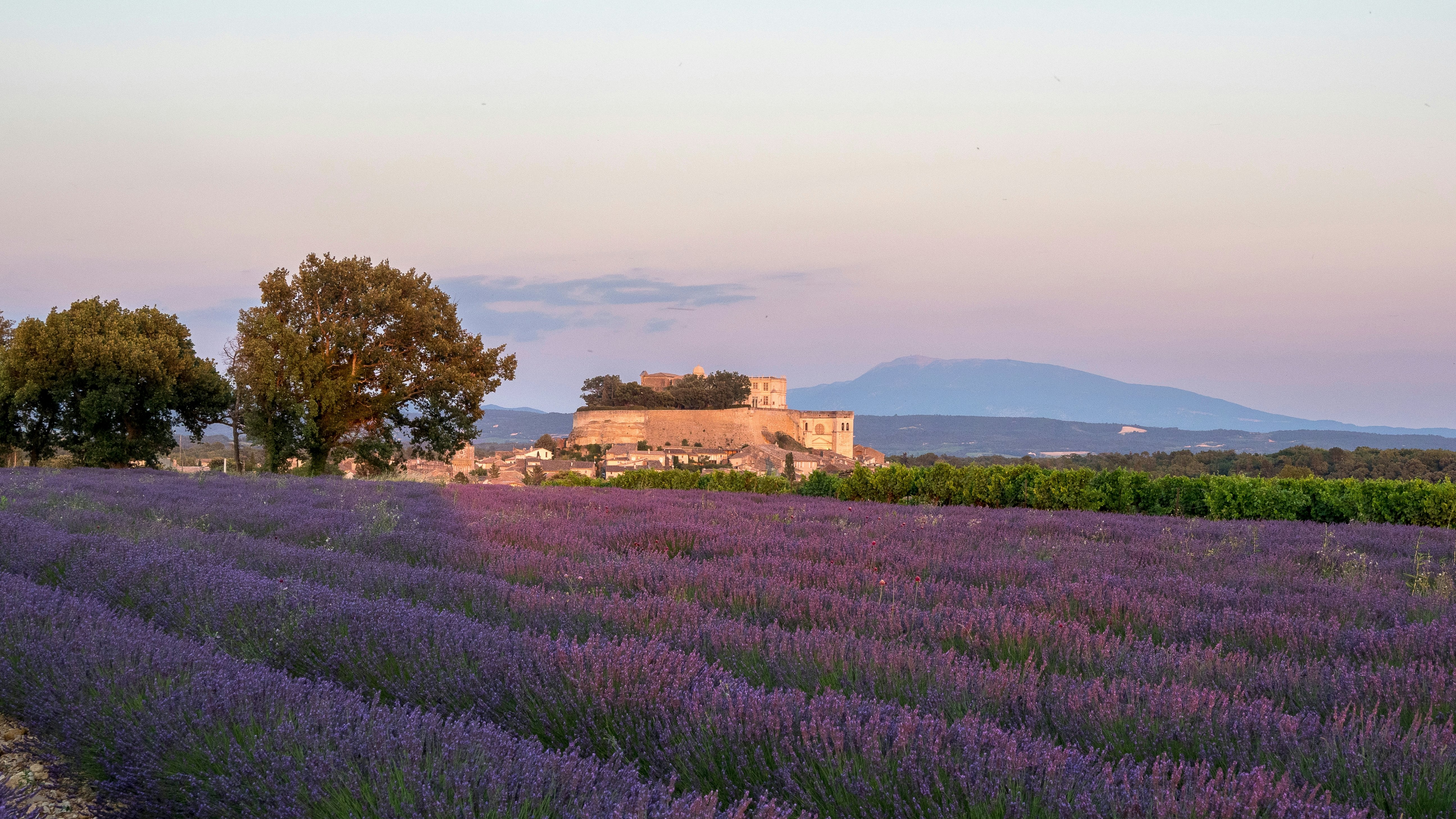
8. Wander through lavender, mimosa and perfume gardens
From rows of purple lavender stretching as far as the eye can see to the delicate rose and jasmine fragrances that underlie the world’s most recognizable perfumes, much of Provence's identity is intertwined with its floral bounty. Breathe in the smells and soak up the traditions in the region’s vast fields and manicured gardens.
Hilltop Tourrettes-sur-Loup is known as the “village of violets” – and breaks out in every shade of purple in early March for the annual Fête des Violettes. And you won’t want to miss Provence’s iconic lavender fields. Between mid-June and mid-August – especially around the Luberon valley, the Plateau de Valensole near Manosque and the Sault area – you will be spoiled for choice when it comes to lavender experiences. But there’s more to Provence’s flower aesthetic than just purple blooms.
Set off on the coastal Route du Mimosa, a 130km (80-mile) winter road trip framed by golden blooms in late winter/early spring (January to March). Breathe in the scents of the world’s greatest perfume flowers at the Jardins du Musée International de la Parfumerie in Grasse all spring and summer. And you can wander the breezy gardens of Domaine du Rayol, whose every corner is cultivated with species from arid ecosystems around the world, year-round (although it’s closed on Christmas Day).
Planning tip: The gardens of the Côte d’Azur throw open their gates to welcome visitors during the month-long Festival des Jardins de la Côte d’Azur in April.
9. Discover relics from ancient history today
Wherever you look, you’ll find relics of Provence's rich history on display, from the earliest imprints of human settlement carved by hand in caves to imposing Roman arenas where gladiators once fought to the fortified Gothic palace the medieval papacy called home. Belle époque buildings and art deco detailing are tokens of modern times and tell the story of how the southeastern coast of France grew into a must-visit destination for early travelers. Admire the World Heritage–listed streets of Nice and step back into an era when winter was the high season for travel.
See if you can answer the mystery surrounding 40,000 enigmatic Bronze Age rock engravings in the Vallée des Merveilles. Feel the Roman legacy as you walk the streets of Arles – a onetime economic, political and cultural center in a sprawling empire. Lose yourself in the churches, gardens and abbeys that stand testament to the time the papacy swapped Rome for Avignon.

10. Taste traditional dishes and global fusions
Whether you're hungry for gastronomic dining or street food that sets your taste buds sizzling, Provence and the Côte d’Azur’s kitchens have you covered. Marseille overflows with global influences, while chefs in Nice are reinventing the city’s traditional cuisine. Fresh, seasonal flavors rule the coast; inland, the mountain air is paired with heartier fare. Provence also knows how to throw a market, from fragrant weekly events to specialty markets that shine a spotlight on a particular product in season. Whether breakfast, brunch, lunch or dinner, there’s always someone bringing something new to the table. So make sure you pack your appetite.
Top dishes to try in Provence include daube (a slow-cooked beef stew, often accompanied by polenta), bouillabaisse (a rust-colored fish stew and the emblematic dish of Marseille) and soupe au pistou (a rustic legume and vegetable-packed soup). Or after a day on the slopes, order a delightfully decadent fondue de l’Ubaye, created from three alpine cheeses.
Snacks to look out for include pissaladière (pizza topped with caramelized onions, olives and anchovies) which is usually served by the slice. A thin chickpea-flour pancake called socca is baked in wood-fired ovens across Nice; panisse, chickpea-flour fritters that are crispy on the outside, creamy on the inside, are a culinary mainstay of Marseille.
For top gourmet experiences in Provence, add Nadia Sammut’s wonderfully rustic Luberon restaurant Auberge La Fenière; farm-to-table La Chassagnette in the middle of the Camargue; and La Petite Plage St-Tropez for oysters, caviar and Champagne cocktails to your fine-dining bucket list.
Planning tip: The truffle season runs from mid-November to mid-March. Visit the Marché des Truffes in Carpentras to spot traders trading this “black gold.”
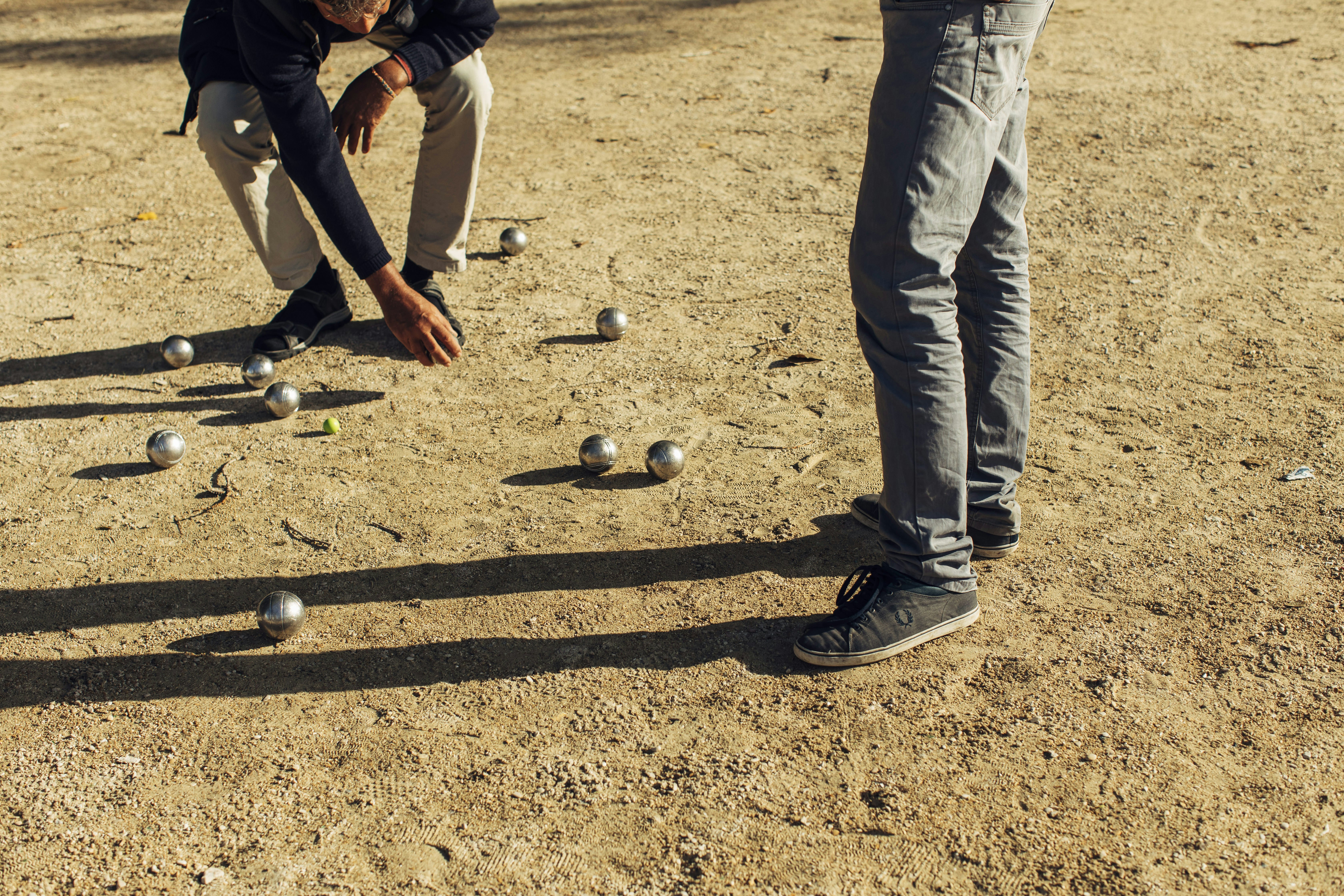
11. Slow down and enjoy (or watch) a game of pétanque
If there’s one image that sums up the Provençal lifestyle, it’s a game of pétanque being played on a patch of dusty ground in the evening sunshine. Pétanque (known in the rest of France as boules) was invented in La Ciotat, near Marseille, in 1910 when arthritis-crippled Jules Le Noir could no longer take the running strides prior to aiming demanded by the longue boule game. The local champion thus stood with his feet firmly on the ground – a style that became known as pieds tanques (Provençal for “tied feet,” from which ”pétanque“ derives).
To have a spin yourself (or watch the drama unfold on the village square), here are the main rules. Two to six people, split into two teams, can play. Each player has three solid metal boules (balls). Each team takes it in turn to aim a boule at a tiny wooden ball called a cochonnet (jack), the idea being to land the boule as close as possible to it. The team with the closest boule wins the round; points are allocated by totting up how many boules the winner’s team has closest to the marker (one point for each boule). The first to notch up 13 wins the match.
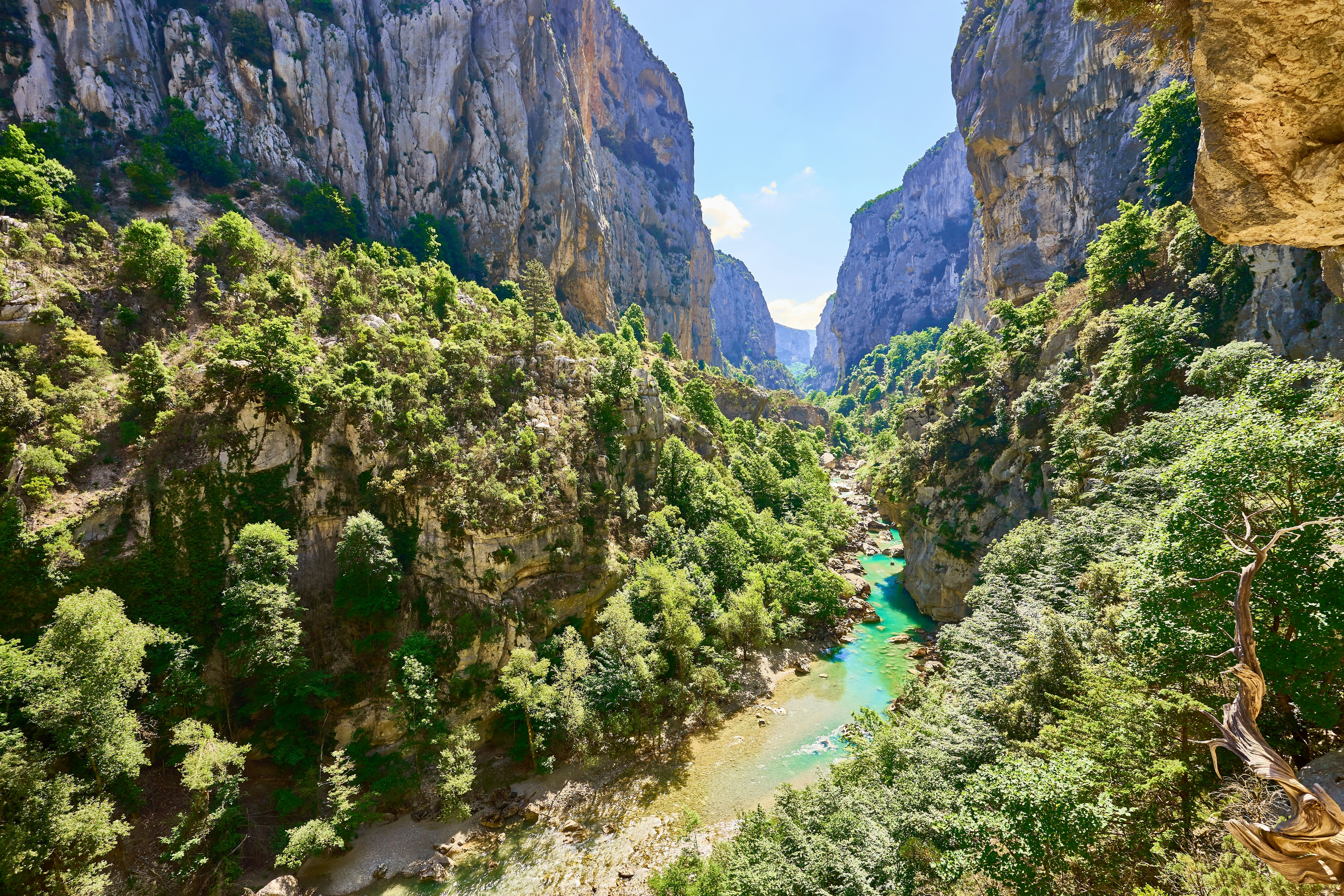
12. Take a hike in nature
Provence and the Côte d’Azur's postcard landscape of high hills, dizzying gorges and rocky coastlines is a delight to navigate on foot, from sweeping mountain treks across long-distance GR (Grande Randonnée) trails to short but steep coastal scrambles and flat island paths that weave through fragrant pine forests. Even in the bigger cities, you're never too far from a sentier balisé (marked path); the local tourist office hands out maps and guides, and will also point out accessible hiking trails.
The most popular trails are hot and busy in summer; high wildfire risks shutter some forested paths as well. Spring and autumn days enjoy ideal temperatures and conditions. You can even snowshoe through enchanting snow-dusted forests in winter.
Planning tip: Being prepared is essential; hiking shoes, water, hat and sunscreen are musts. Be aware that a phone signal isn’t guaranteed.

13. Get out there exploring by bike
Home to bucket-list climbs such as the Col de la Madone de Gorbio, Col de la Bonette and the holy grail of Mont Ventoux, Provence is quite literally the training ground for the world’s best road cyclists. You don’t have to be an Olympic athlete to enjoy the view from the saddle, however: the quieter back roads of the Luberon and Provence Verte snake through fragranced fields and postcard-pretty villages – although you’re never too far from the next incline. The TransVerdon is one of France’s classic mountain-bike trails. In summer, the ski runs behind Nice and in the Alpes-de-Haute-Provence turn into shaded off-road routes.
Planning tip: Bike cafes (cafés vélo) are emerging as hubs to connect with fellow cyclists, learn about local routes and sign up for group rides. Road bikes (vélo de route), mountain bikes (VTT, vélo tout-terrain) and e-bikes are available to hire across the region.
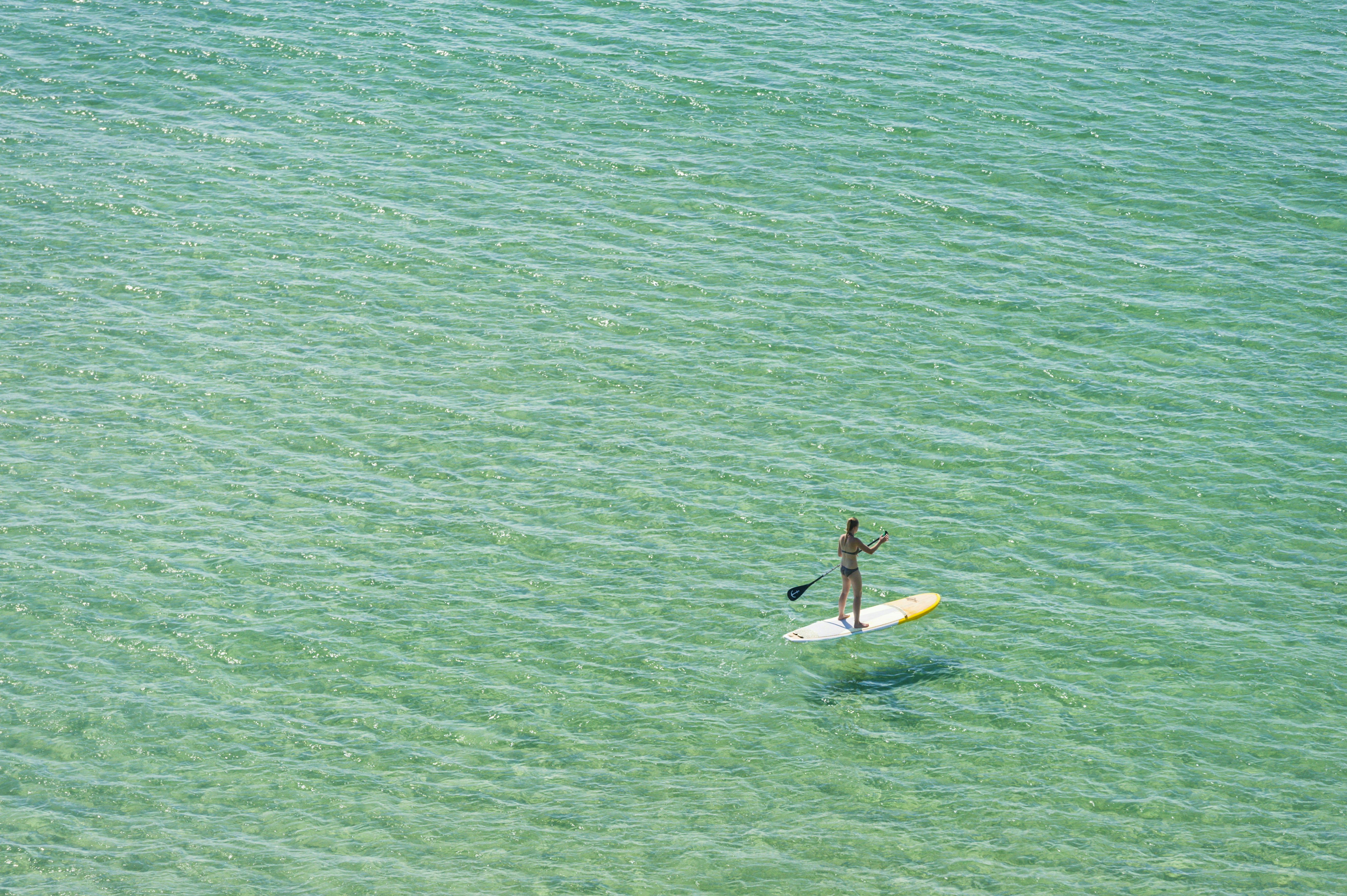
14. Go swimming, snorkeling or paddleboarding
You couldn’t come to the coast on the south of France and not get wet – whether that means a quick paddle or a proper snorkeling session. The good news is the sea here is usually warm enough for swimming without a wetsuit between June and October, and flippers, masks and goggles are widely available from sport and dive shops.
You’ll find plenty of places to while away a summer in Provence and not just to swim. Snorkel with shoals of dreamfish and skim over lazy sea cucumbers during guided snorkel tours at Domaine du Rayol. Along the coast and islands of Provence, local dive clubs offer courses (many in English) as well as single dives. If diving is on your agenda, some of the best places to take the plunge include Parc Marin Côte Bleue, near Marseille; the wreck sites near Ste-Maxime and the islands near Cannes. Stand-up paddleboarding is also popular, with SUP boards available to rent at many beaches along the coast.
This article was adapted from Lonely Planet’s Provence & the Cote d'Azur guidebook, published in May 2024.








